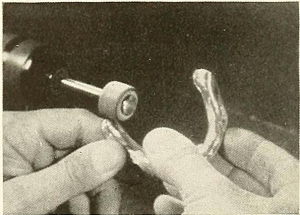
"The term, "perfect," is not one to be given lightly, but The Ackley Lower Impression Technic, a dental study, earns such comment, because there is no other word that fits. Harry Coleman, the producer, here shows a complete mastery of the camera. The film, of greatest interest to dental technicians, carries brief, double exposed titles that make each progressive step thoroughly clear to those versed in the phraseology. The titles appear at the proper time, superimposed upon the scene but out of the field of action, thus serving as a visual commentary. To anybody who is interested in dental filming, this movie might well serve as a model of a technical film, for it features extreme closeups, work in areas of the mouth difficult to film and a lighting technique indicative of real study and much experience. The exposure, especially important in showing the slight variations of color in parts of the mouth, is unusually accurate. Rarely does one see so satisfying an accomplishment in films of this specialized type." Movie Makers, Dec. 1941, 564.
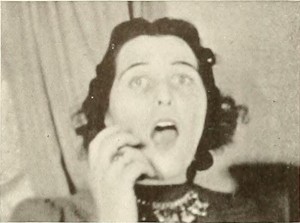
"When Ernest Kremer wanted to make a film which would include his family and, at the same time, be entertaining to outsiders, he devised An Anaesthetic Fantasy, an ingenious tale of the nightmare of a dental patient under laughing gas. The patient imagines that he returns home, and there things begin to happen that confound him and the audience, too. Clever trick work, dissolves and stop motion are used to create this section of the film. Mr. Kremer has proved that the 8mm. worker need not bow to his 16mm. brothers when it comes to producing cine illusions. The film was presented with a delightfully appropriate selection of musical records played on a dual turntable outfit." Movie Makers, Dec. 1940, 601-602.
"A Hitchcock type film, the star's fear all being caused by an appointment with the dentist, but under the gas he dreams of meeting an attractive girl. But he wakes up just as it gets interesting." PSA Journal, Nov. 1956, 45.
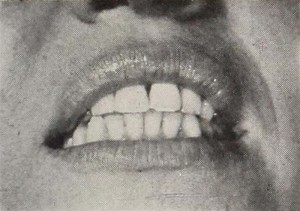
"In A Complete Immediate Denture Technique for the General Practitioner, Dr. James E. Bliss offers a striking example of how skillfully motion picture technique may be adapted to a subject as highly specialized as dentistry. An intelligent and systematic scheme of varying camera positions serves to present detailed material in as effective a manner as possible. Unhampered by the conventional idea, that the camera should rarely be shifted from one viewpoint to another when making such a film, Dr. Bliss has approached the subject with a plan of shooting sequences just as if he were making a dramatic film. The whole scheme of shots is simply considerably closer than it would be in the case of an ordinary subject. The result gives a feeling of unity and assures one that he is not looking at a series of movie slides. The ultra closeups in color are among the finest that have ever been filmed and, because of excellent lighting and precise focus, they make an outstanding teaching film." Movie Makers, Dec. 1939, 636.
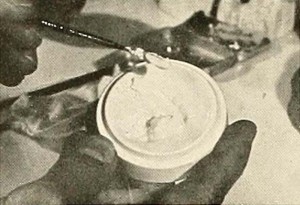
"It is probably safe to say that nowhere in the world has been made a dental picture more perfect in detail than Complete Operative and Prosthetic Technic for Porcelain Jacket Crown Restorations. Dr. Milton Cohen has portrayed this highly intricate and skilled dental project in superb Kodachrome closeups. Not only do the ultra close shots of the work in the oral cavity achieve great fidelity as to color, but also the many operations in the dental laboratory are filmed with equal expertness. Certain steps in the procedure are portrayed by the use of heroic steed models, and these scenes were smoothly integrated with the scenes taken in the mouth of the living model. Although treating of a subject necessarily highly technical in nature, the titles were so well written that they made the film clear to a layman. The picture is distinguished by even exposure, sharp focus, good lighting and excellent camera angles. It is interesting to note that Dr. Cohen not only made the picture but also did all the work shown in it." Movie Makers, Dec. 1937, 603.
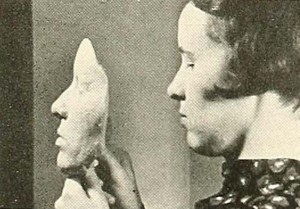
"In Moulage For Masks, filmed for Dr. G. A. Peterson, Dr. James E. Bliss presents with satisfying clarity a step by step study of the procedure of producing the facial masks used to guide the operator in making dental restorations. A logical and carefully prepared script, added to finished camera work and exact editing, has created a color picture that gives an amazing amount of information in brief footage. It is a classroom film of notable competence, both because of the logicality of the cinematic thinking that it represents and because of the successful manner in which it always focuses audience attention on significant action. Carefully written titles integrate perfectly with the sequences, and the whole forms as compact a study as could be produced on this subject. At the same time, an eye for color composition and human interest has made the reel attractive from the layman's point of view." Movie Makers, Dec. 1937, 627.
"Good classroom film describing a method for the construction of facial casts by the use of a rubber like 'Moulage' for the impression. The photographic quality of the film is so good and the subject matter so interesting that the film is far above average. The color of course adds to its attractiveness. Film follows the instructor through the procedure of making a mask." Educational Film Catalog, 1939, 227.
"Dr. McAfee presented technical subject in a manner that was interesting to the layman as well as the dentist. His photography was consistent and his continuity thorough." American Cinematographer, Dec. 1933, 342.
"Surgical Preparation for Maxillary Denture is particularly detailed. Beginning with a study of the models, including some animation, it then shows the administration of the anesthetic to the patient, the extraction of the teeth, the preparation of the denture and the final discharge of the patient." Movie Makers, Sept. 1933, 337.
"In Surgical Eradication of Pyorrhea, Dr. S. H. McAfee, ACL, made use of a very fine closeup technique and, in presenting the preliminary clinical information, plaster models played an important part. The work was shown step by step so that certain points could be watched more closely later on. The very difficult problem of lighting oral surgery for good photography was well handled and the resulting exposure and definition were eminently satisfactory." Movie Makers, Dec. 1933, 524.
Total Pages: 2